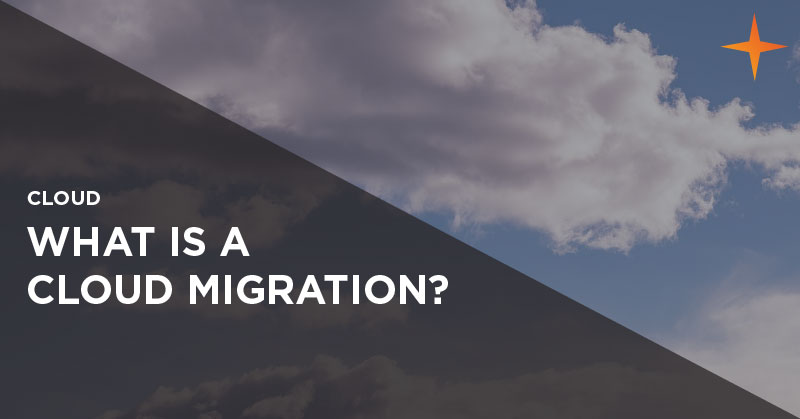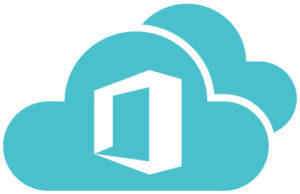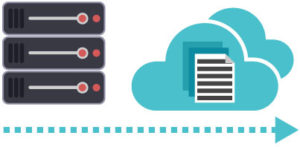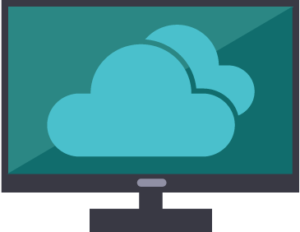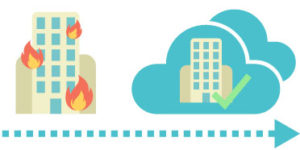Blog
The Cloud Migration Guide – Part 1: What is a cloud migration?
November 5th, 2018
A cloud migration is the process of moving files, software, desktops or infrastructure to a cloud-hosted environment. Cloud migrations are often undertaken by businesses who are seeking to expand beyond their current hardware, storage or space limits. Or alternatively, a cloud migration may be the first step on a digital transformation for the business, opening the ability to undertake new IT projects which may not have been feasible before.
What types of cloud migration are there?
Cloud migrations will typically fall into one of the following categories:
- Migrating from physical infrastructure to cloud infrastructure
- Migrating from one cloud platform to another platform from a different supplier
However, we can break these down into further subcategories:
Lift-and-Shift
In-house applications are replicated in the cloud without redesign. This is typically the fastest method for migrating applications and the one which causes the least disruption. However, without a redesign, the migrated applications may not be taking full advantage of the speed, scalability and versatility the cloud offers. This is sometimes known as a “forklift approach” or “rehosting”.
Software as a Service (SaaS) migration
Some applications are moved to the cloud whilst others remain on-premise. Email and payroll are two functions often moved to a SaaS solution as it reduces hardware requirements and maintenance costs.
Replatforming
A small amount of upversioning is done whilst moving applications to the cloud, allowing them to take greater advantage of cloud architecture. While slightly slower, this method allows businesses to take better advantage of cloud functionality without draining their resources.
Application Modernisation
Instead of moving the application, it is remade (known as refactoring) to be optimised for a cloud environment. The result is a refactored application that fully utilises every benefit cloud architecture has to offer. This approach is particularly beneficial for the migration of legacy applications but it takes far longer than any of the other methods.
Choosing which type of migration is best suited for your business is a strategic decision. And to get optimal results, you need to consider your migration goals, your timescale and the importance of the application itself.
How can a cloud migration help?
Depending on your specific business goals, a cloud migration helps you in a range of different ways.
- If you’re aiming to reduce the upfront costs of IT infrastructure then transferring your backups, disaster recovery and general file storage over to the cloud is an advisable course of action.
- To get increased workstation performance you should consider hosted desktop or if you want all-round performance increases then you should look at cloud hosting for your servers.
- For streamlined business processes and increased efficiency, you could migrate to cloud-based Office 365.
How can businesses move to the cloud?
Migrating to the cloud is not a singular activity and there are many ways your business can do it. It can be done with Infrastructure as a Service (IaaS), Platform as a Service (PaaS), or Software as a Service (SaaS). Below are some examples of ways you can migrate to the cloud.
1. Office 365 migration
Migrating from the old, license-based versions of the Office suite to an Office 365 subscription that is cloud-based can lead to a range of business efficiency improvements.
Not only is the software regularly updated with additional security and bug fixes, but new features are often added, and performance increases are made. This further boosts the efficiency of the programs and can increase productivity and collaboration.
Because Office 365 can save files in the cloud, this also lets you access your important documents from anywhere with an Internet connection on any device that has the relevant app installed. This allows for a much more agile approach to work as you can access the files you need, wherever you are.
2. Backup as a service
Migrating to the cloud enables more than performance upgrades. It can also offer security and resiliency improvements such as Backup as a Service (BaaS).
Also known as cloud backup or online backup, BaaS is a method of offsite data storage, where a third party regularly backs ups files, folders or hard drives to a secure cloud-based repository. This protects the data and enables it to be restored should it be lost, damaged or destroyed.
Businesses using Software as a Service (SaaS) applications are common users of BaaS, as SaaS vendor’s backup policies often don’t guarantee the swift and complete restoration of lost data that BaaS does.
With BaaS it’s also possible to take live backups. Instead of taking backups every night or every week (you should be really backing up at least once every day) a backup can instead be made every time a file is saved or changed. This means that instead of losing a whole day’s work, a few minutes’ worth, or potentially no data is lost.
Furthermore, migrating your backup to the cloud removes the worry of rotating and managing tapes or hard disks and ensuring they are taken offsite at regular intervals.
3. Hosted desktop
Hosted Desktop is a relatively old use of cloud technologies – but is still popular. Having hosted desktops means that rather than the workstation located in the business office doing the processing, a copy of the workstation hosted in the cloud does it instead. Mouse clicks and key presses are transmitted to the hosted machine and a live feed of the screen is sent back to the physical machine to be displayed.
By migrating desktops to the cloud, businesses can increase the performance whilst simultaneously decreasing the cost of hardware.
This has the benefit of reducing the overall processing power required for each individual workstation (and thus the price of the workstation) as the cloud hardware (which has superior performance to the workstation hardware) is doing all the processing already.
Hosted desktop also means that you can access the hosted machine from nearly anywhere. If the machine you are using has the software that allows you to connect to the hosted machine, you can work on the go and access the files stored on the hosted machine from anywhere.
4. Disaster recovery as a service
DRaaS is where a copy of the core server infrastructure, including critical data and applications, is hosted in the cloud. In the event of an emergency where the IT environment is down, i.e. through hardware failure, natural disaster, or cyber-attack, everything can switch over to the hosted version and the business can continue as normal with minimal downtime.
Compared to legacy disaster recovery systems, DRaaS is significantly easier, less expensive and more accessible for businesses. It also doesn’t accrue the costs of having duplicate hardware constantly running in case of an outage.
The failover process can additionally be set up to occur automatically, letting access be restored in minutes. This significantly reduces downtime and avoids the crippling financial losses caused by an outage.
Why should I undertake a cloud migration?
Moving to the cloud allows you to experience a range of benefits. Reduced infrastructure costs, increased performance, scalable storage and improved cyber-security are just a few examples.
Part 2 of the Cloud Migration Guide looks at the rewards of a cloud migration along with the potential risks and how to mitigate them. Read part 2 here.
See also:
The Cloud Migration Guide – Part 2: Risks and rewards of a cloud migration
Choosing to migrate some or all your business systems to the cloud can provide a significant return on investment. However, as it is with all significant IT projects, cloud migration is not without its risks, whether moving into a private cloud or a public cloud, such as Microsoft Azure But just because there are risks […]
The Cloud Migration Guide – Part 3: Is your business ready for cloud?
There are very few businesses that would see zero benefits from the cloud. In fact, it’s expected that the clear majority of businesses will use cloud services in the next few years. With a considerable proportion of them having a 100% cloud-based environment. However, like all projects, there’s the best time to undertake a migration. […]
The Cloud Migration Guide – Part 4: How to achieve a successful cloud migration
Welcome to the final instalment of the Cloud Migration Guide. If you’ve missed an earlier part or would like a recap, click here to view: Part 1: What is a cloud migration | Part 2: The risks and rewards of migration | Part 3: Factors which influence cloud readiness. Cloud migration has a lot to […]
